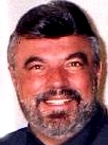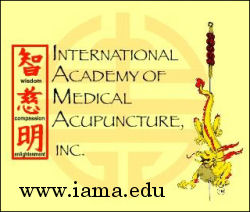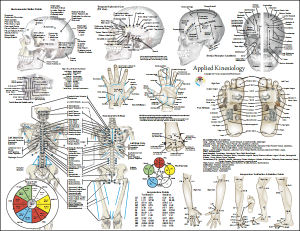Acupuncture & TCM Articles

Acupuncture Articles
by John A. Amaro L.Ac., Dipl.Ac.(NCCAOM), DC
 Dr. Amaro is an internationally known author, lecturer and practitioner beginning his practice of Acupuncture and Chiropractic in 1971. He has led 13 diplomatic Acupuncture study tours of The People's Republic of China escorting more than 500 doctors and practitioners. He has personally studied Acupuncture in nine separate Asian nations. Dr. Amaro is an internationally known author, lecturer and practitioner beginning his practice of Acupuncture and Chiropractic in 1971. He has led 13 diplomatic Acupuncture study tours of The People's Republic of China escorting more than 500 doctors and practitioners. He has personally studied Acupuncture in nine separate Asian nations.
He has received Certification in Acupuncture through the Columbia Institute of Chiropractic in 1973. This was one of the first Acupuncture postgraduate education programs for physicians in North America commencing in 1972.
He has been certified by the Waseda Acupuncture College in Tokyo, Japan in 1974 and graduated from the Chinese Medical Institute, Kowloon, China in 1976. He had previously taken postgraduate studies at the Tai Chung Medical School Taipei, China 1973.
The Sphenoid, Acupuncture and Healing
John A. Amaro L.Ac., Dipl.Ac.(NCCAOM), DC
Without question one of the most significant but overlooked functions of the human system is the vital role of the sphenoid bone in neurological and hormonal health issues. This butterfly-shaped bone, which makes up the floor of the skull, articulates with literally all of the bones of the skull.
That makes it a central pivot point of the entire cranium. It comprises the majority of the posterior wall of the optic compartment. Its anatomical structure is extremely complex and difficult to understand.
The sphenoid bone's two most notable structures are the cuplike "sella turcica" (Turkish saddle) at the floor of the skull.
These two house and protect the pituitary gland (master gland of the endocrine system) and the sphenobasilar articulation of the occipital bone.
The sphenobasilar joint is where the sphenoid articulates with the occipital bone and because of its amphiarthroidial (partially movable synchondrosis) nature, establishes what many consider to be one of the most significant articulations of the body.
This is due to the milking effect this joint has upon cerebrospinal fluid, in addition to its overall effect on the pituitary gland as well as the general nervous system.
Because of the limited degree of flexibility within the sphenobasilar articulation which it carries throughout life, this joint may and does become stagnated as a result of either major or minor head trauma to any surface of the skull, altered bio-magnetic energetic effects of the Lower Shao Yang (Gallbladder) meridian, eye strain or muscle spasm along the occipital/cervico area to include any mal occlusion of the teeth and TMJ involvement.
Stagnated qi or energetic disruption, in addition to fixation subluxation of the sphenobasilar joint, may produce a variety of conditions which may never be resolved if the vital areas affecting the sphenoid bone are not addressed.
Most notably are any and all dysfunctions of the endocrine system to include thyroid, adrenal, parathyroid, ovaries, testicles and all glands of the body.
Master Gland
The pituitary gland, being the master gland of the body, directly affects all of the endocrine system.
Any involvement of the sense of taste, smell, speech or hearing, tremors, tics, choreic movements, tinnitus, deafness, mental depression, migraine, any type of headache especially those emanating from the occiput, frontal or around the eyes.
Others included are insomnia, temperature regulation disturbance, eye ptosis, any vision, nasal involvement, memory disturbance, unable to concentrate (focus), brain function and hyper activity behavior.
In actuality, all functions of the body may be directly or indirectly affected through the neurological relationship of the sphenoid bone and its role with the occiput.
Children are especially prone to injury of the occiput and sphenoid because of falls and bumps. So too are adults involved in sports and accidents.
Any bump to the cranium, especially the frontal, temporal and occiput may be responsible for a variety of non-responsive health conditions.
Key Acupoints
There are three specific acupoints which have the most impact on the sphenoid and its relationship to neurological functioning: Tai Yang, Yin Tang and GV16.
Tai Yang is the famed acupoint point located just behind the zygomatic arch lateral to the eye socket and half way between the end of the eyebrow and the outer canthus of the eye.
The point specifically lies over the great wing of the sphenoid at the side of the head bordered by the frontal, parietal, zygoma and temporal bones and has major neurological connections throughout the body.
This point in my opinion, is one of the most powerful points on the body and one in which the general practitioner may wish to re-evaluate the importance of this point as it can be used for virtually all conditions previously mentioned and perhaps many which were not.
Yin Tang, another famed acupoint, is located at the glabella directly between the eyebrows.
The glabella is located where the frontal bone and maxilla articulate which both have major connections with the sphenoid.
This point has been used for a variety of conditions in acupuncture however when it is combined with Tai Yang it produces amazing clinical response regarding sphenoid produced health conditions.
GV16 (DU 16) is located just under the occiput just below the inion or the "bump" on the occiput. This point is noted for its neurological effects.
Because of posterior inferior malposition of the occiput, a key approach in treating this point is to use in addition to general needle, electronic or laser stimulation, percussive therapy either by hand or preferably with a percussive instrument, in a superior direction or by direct digital pressure with firm tapping.
This procedure produces absolutely fantastic clinical response.
If you are not exactly sure of the approach, simply begin utilizing Tai Yang, Yin Tang, and GV16 with a non-invasive teishein for 25 strokes in short bursts of five on your very difficult and non-responsive patients and watch what happens.
These points are to be used bilaterally on Tai Yang as both Yin Tang and GV 16 are midline points.
Add GV 14, KI 27 and the occiput, frontal vertex and brain stem points of the ear.
What you will experience is nothing short of miraculous.
If you would like a graphic of the points mentioned, please request by referencing "acupoints of the sphenoid" to dramaro@iama.edu .
Please contact me regarding your success cases, would love to hear about them.
Extraordinary Acupuncture Point Locations and Indications

Applied Kinesiology Poster Laminated 17" X 22"
The poster shows the neurolymphatic reflex points, stress receptor locations, neurovascular reflex points...
Applied kinesiology poster showing the neurolymphatic reflex points, acupuncture tonification and sedation points, acupuncture points for the treatment of gait mechanism, muscle/meridian association, TS line, stress receptor locations, neurovascular reflex points, tooth muscle relationship, hand reflexes, foot reflexes and horary cycle. Designed for manual therapists, chiropractors and osteopaths.
| 